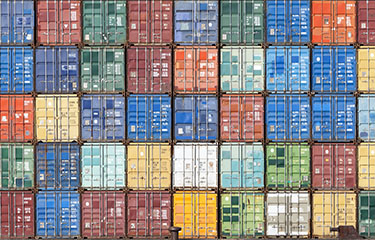Shipping prices have cratered in recent months, giving seafood companies the ability to seek “payback” from cargo companies that inflated prices to quadruple or more what they had been prior to 2021.
A long line of transportation and logistical snags caused gridlock at ports around the world in 2021, taking more than a year to resolve. With containers and ship space at a premium, shippers like Maersk and MSC began to charge more for their services – some seafood companies reported paying more than USD 20,000 (EUR 18,900) to move a container from Asia to the United States. But now rates are around USD 1,150 (EUR 1,090) per container, and more companies are aggressively shopping around for the best rate and often finding deals on the spot market. Lawrence Burns, a consultant who formerly handled negotiations for Hyundai Merchant Marine, told Reuters importer and exporter shipping managers now have the upper hand in negotiations.
"They've been called into the CEO's office too many times in the last two years. They're coming back for blood," Burns said.
It’s a case of "shippers' revenge," said Jon Monroe, the North American representative for Singapore-based Transfar Shipping, whose investors include China e-commerce player Alibaba.
"There was a time when everybody looked for a win-win,” he said. “COVID threw that right off the tracks.”
Container logistics firm Container xChange reported February has been “complex” for the global shipping industry, with lower demand in Northern Europe and slower pickup in China. Prices across Asia including Ningbo, Shanghai, and Singapore have “fallen sharply” the past year and Container xChange Managing Director Johannes Schlingmeier said he does not foresee a turnaround coming anytime soon.
After enduring months of long lines to enter ports along the U.S. West Coast, shippers now face no delays, with Goldman Sachs reporting the number of container ships waiting to unload across the U.S. West Coast remained flat at zero for the twelfth week in a row. The number of ships waiting to enter U.S. East Coast ports declined from 12 to 16.
In December 2022, the U.S reported receiving 1,929,032 inbound containers, down 1.3 percent from November. The U.S. Commerce Department said overall U.S. imports decreased 2 percent year-over-year through the holiday season.
“Tight grip on costs becomes paramount for freight forwarders into the year 2023. While on one hand there will be a great deal of negotiation with shipping lines and on the other hand, operational cost optimization will be crucial for the forwarders,” Schlingmeier said. “There will be careful monitoring of the demurrage and detention charges, insurance charges, claims, etcetera.”
Container xChange estimated the average price of shipping a 20-foot container in the Northern Europe region was USD 861 (EUR 813) in January. The Northeast Asia average price in January was USD 1,300 (EUR 1,228), and the regional average price in Southeast Asia sunk to USD 1,250 (EUR 1,180).
“Container trends are a crucial barometer of economic progress and global trade, and the current market outlook appears bleak,” Container xChange CEO Christian Roeloffs said. “Container prices and leasing rates are plummeting, with the global shipping industry witnessing a freefall in container rates. The blank sailings have not been able to control the sliding prices, and the mid-term outlook for the industry indicates a slowdown in container trade on Asia-to-E.U. and Asia-to-America trade lane. However, contract rates are closer to spot rates, indicating the lack of demand for long-term commitments, which can be attributed to market uncertainty.”
The blank sailings, or canceled voyages, could create a new round of shipping delays as containers are bumped back on schedules. The Port of Los Angeles reported 17 canceled voyages in January and warned of more to come, according to Reuters. And the weaker rates have also forced some smaller carriers out of business, such as Australia-based Focus Container Line, which entered liquidation in February, and Allseas Global Project Logistics, which folded in October 2022, according to Maritime Executive. The loss of competition could leave shippers with fewer options to choose from and eventually lead to higher rates.
Photo courtesy of Ralf Gosch/Shutterstock







